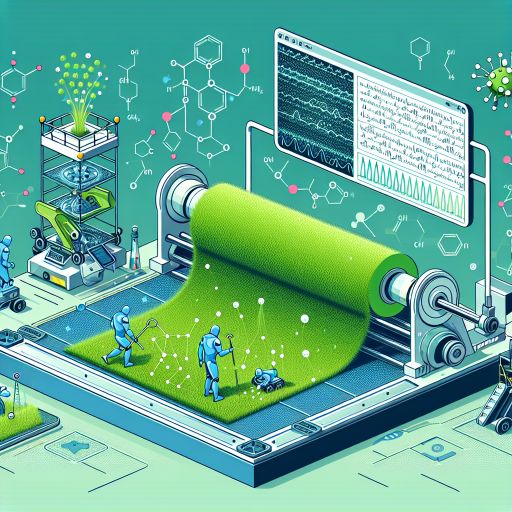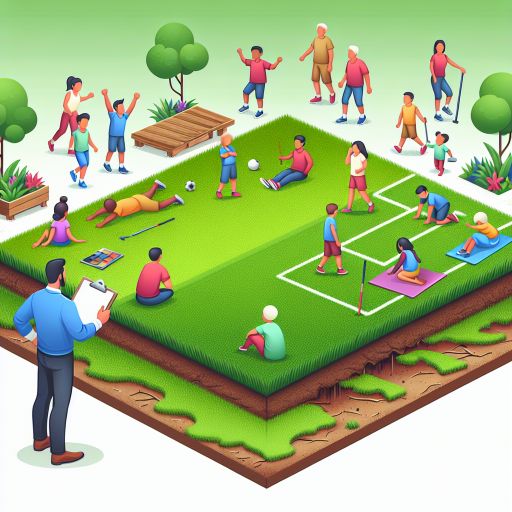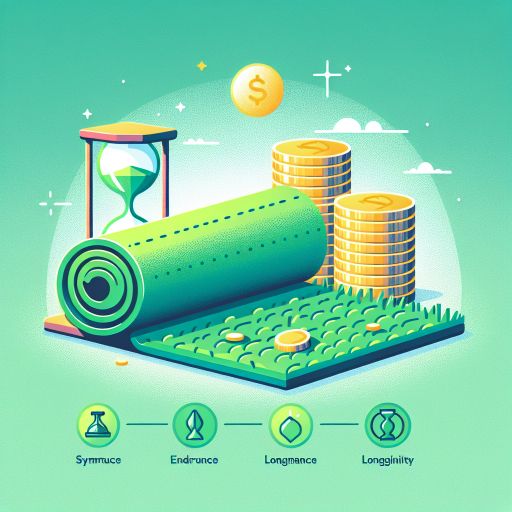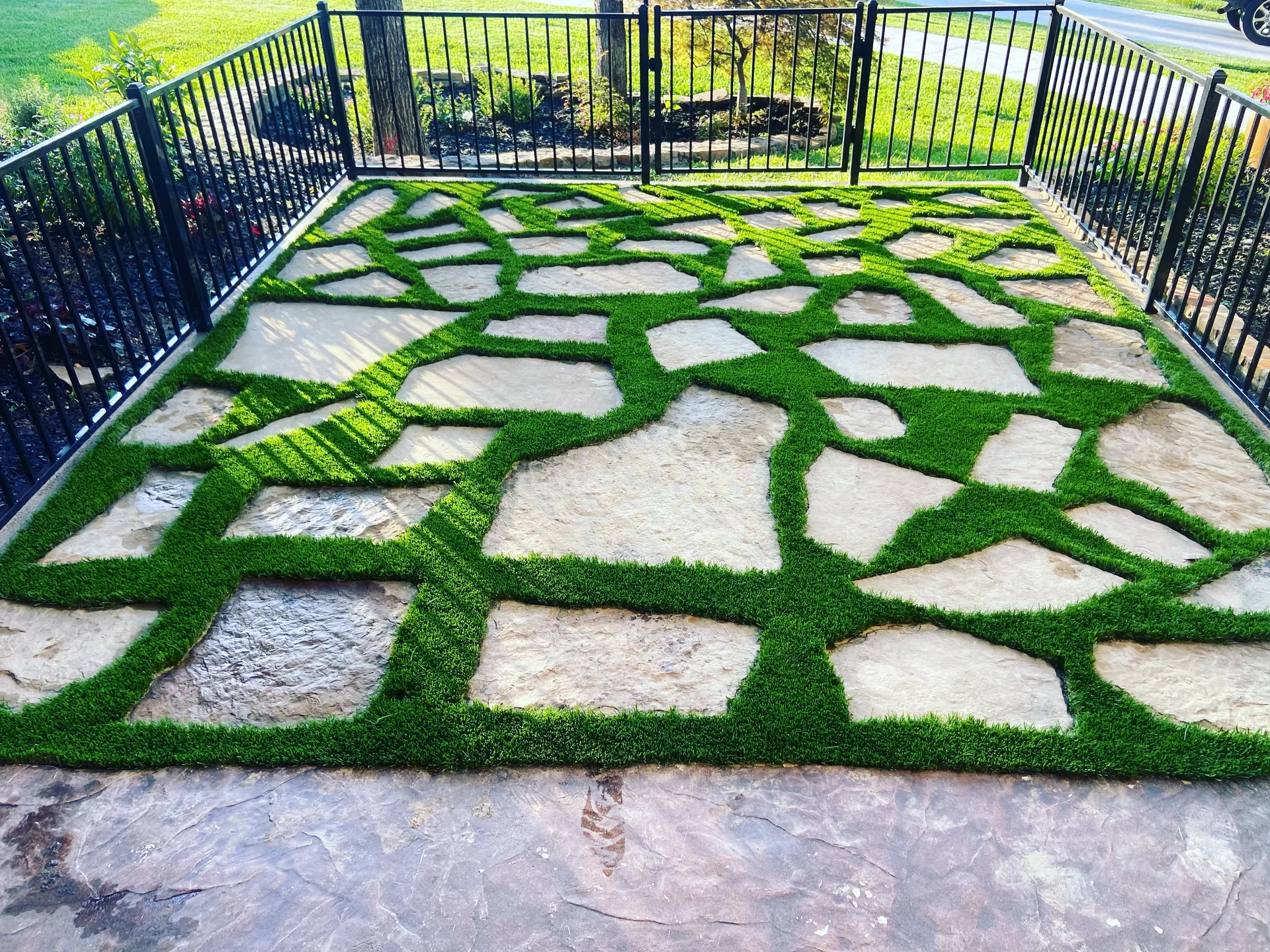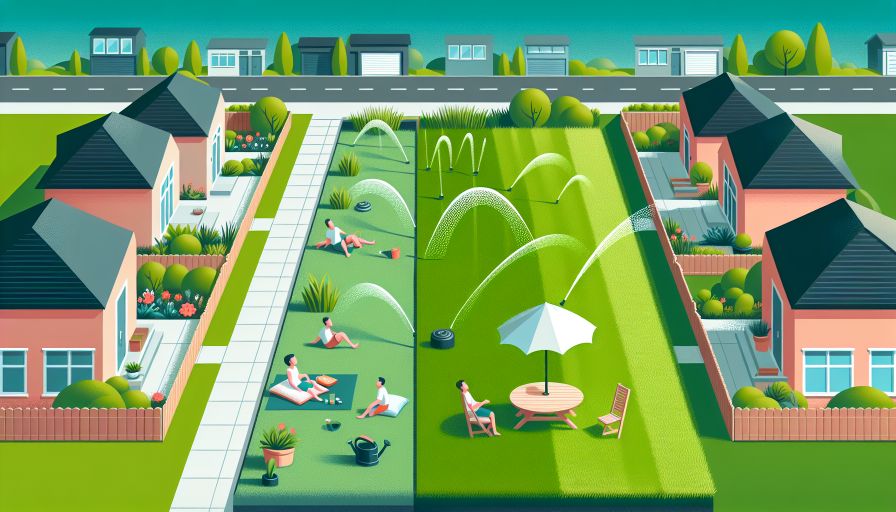
- Introduction to Sustainable Landscaping and Water Conservation
- The History and Development of Synthetic Turf
- Environmental Impact of Traditional Lawns
- Water Usage: Traditional Lawns vs. Synthetic Turf
- Technological Advancements in Synthetic Turf Materials
- Case Studies: Successful Implementation of Synthetic Turf
- Long-term Benefits and Cost-effectiveness of Synthetic Turf
- Future Trends and Innovations in Synthetic Turf for Water Conservation
Introduction to Sustainable Landscaping and Water Conservation
In recent years, the concept of sustainable landscaping has emerged as a pivotal strategy to address environmental issues, with a primary focus on conserving natural resources. A critical component of this strategy is effective water conservation, which has become increasingly essential as many regions across the globe face water shortages and drought conditions. Sustainable landscaping seeks to create outdoor spaces that are not only aesthetically pleasing but also environmentally responsible.
Water conservation is a fundamental aspect of sustainable landscaping. Traditional lawns can be highly water-intensive, consuming a significant share of residential water use. According to the Environmental Protection Agency (EPA), landscape irrigation accounts for nearly one-third of all residential water use, totaling nearly 9 billion gallons per day. Given this substantial water usage, adopting landscaping practices that reduce reliance on water is of paramount importance.
Sustainable landscaping encompasses a variety of practices aimed at minimizing water use while maintaining vegetation health and visual appeal. These practices include:
- Xeriscaping: The design of landscapes to reduce or eliminate the need for supplemental water from irrigation.
- Mulching: The application of organic or inorganic materials on the soil surface to retain moisture.
- Drip irrigation: A highly efficient watering method that delivers water directly to the plant roots.
- Native plantings: Utilizing plants that are naturally suited to the local climate and soil conditions, thus requiring less water.
Among these sustainable practices, synthetic turf has emerged as a revolutionary solution for water conservation. Unlike traditional lawns that require regular watering, synthetic turf provides a lush, green appearance without the need for irrigation, which can lead to substantial water savings. By reducing the dependency on natural water resources, synthetic turf stands out as a viable alternative in regions grappling with water scarcity.
This chapter provides an overview of the importance of sustainable landscaping and the critical role water conservation plays within it. The adoption of alternative, water-efficient solutions like synthetic turf offers a promising avenue to mitigate environmental impacts and promote sustainable living practices.
The History and Development of Synthetic Turf
The concept of synthetic turf dates back to the 1960s, when Chemgrass, later rebranded as AstroTurf, first came into prominence. Initially developed for sports fields, it was designed as a durable and low-maintenance alternative to natural grass.
The impetus for the development of synthetic turf was driven by the need for a consistent playing surface that could withstand heavy traffic and varied weather conditions. Its first major application debuted in 1966 at the Houston Astrodome, marking a significant milestone in the adoption of artificial grass.
In the decades that followed, manufacturers made substantial improvements to the materials and construction techniques. Early iterations of synthetic turf were criticized for their hard surfaces and potential for causing injuries. Recognizing these drawbacks, the industry evolved, focusing on creating products that more closely mimicked the look and feel of natural grass.
Advancements in technology have led to the development of third and fourth-generation synthetic turfs. These newer versions incorporate features such as softer fibers, better drainage systems, and infill materials like sand and rubber that provide cushioning and stability. These enhancements not only improve the safety and comfort of synthetic turf but also make it more environmentally friendly by using recycled materials.
By the early 2000s, synthetic turf had begun to gain traction beyond sports fields, finding applications in residential, commercial, and municipal landscaping. The growing concern over water scarcity and the high maintenance costs associated with traditional lawns played a significant role in this shift.
Today, modern synthetic turf is designed with sustainability in mind. It addresses issues of water conservation, chemical use, and land degradation associated with natural lawns. The improved durability and lifespan of modern synthetic turf also contribute to its appeal, reducing the frequency of replacement and associated environmental impact.
In conclusion, the evolution of synthetic turf from its early sports-centric designs to its current role in sustainable landscaping showcases a remarkable journey of innovation and adaptation. This development aligns with broader environmental objectives, particularly in regions where water conservation is a critical concern.
Environmental Impact of Traditional Lawns
Traditional lawns have long been a staple of residential and commercial landscaping, offering aesthetic appeal and a recreational surface. However, the environmental impact of maintaining these natural grass areas is significant.
The resource-intensive nature of traditional lawns places a heavy burden on water supplies, particularly in arid regions. According to the Environmental Protection Agency (EPA), landscape irrigation accounts for nearly one-third of all residential water use, totaling nearly 9 billion gallons per day. This figure underscores the substantial volume of water devoted exclusively to the upkeep of lawns.
Beyond water consumption, traditional lawns often require the use of chemical fertilizers, herbicides, and pesticides to maintain their lush appearance. These chemicals can leach into the soil, contaminating local waterways and negatively impacting wildlife and human health. The runoff from lawn chemicals is a leading source of nonpoint source pollution, contributing to the degradation of water quality in many areas.
Frequent lawn mowing also contributes to environmental pollution. Gas-powered lawn mowers emit greenhouse gases and pollutants, including carbon dioxide, hydrocarbons, and particulate matter. The California Air Resources Board found that running a gas-powered lawn mower for an hour emits as much pollution as driving a car for approximately 300 miles. Thus, maintaining traditional grass lawns contributes to air pollution and the broader issues of climate change.
In contrast, synthetic turf presents an environmentally responsible alternative. Companies like Prime Design Turf are at the forefront of this shift, demonstrating the immense potential of synthetic turf to revolutionize landscaping and water conservation efforts. By choosing synthetic turf, businesses and homeowners can significantly reduce their environmental footprint, conserving precious water resources and eliminating the need for harmful chemicals and pollutants.
With over 20 years of experience, Prime Design Turf offers a diverse range of applications for their top-quality synthetic turf, including home gardens, backyard putting greens, pet-friendly zones, parks, playgrounds, and sports fields. The company’s commitment to meticulous installation and personal service ensures a seamless transition to synthetic turf, paired with competitive pricing that makes sustainable landscaping accessible.
The synthetic turf used by Prime Design Turf is designed to withstand the rigors of various uses while preserving the environment. By opting for synthetic alternatives, institutions and residents can make a tangible impact on water conservation and environmental preservation, underscoring the critical role of innovative landscaping solutions in addressing contemporary ecological challenges.
Water Usage: Traditional Lawns vs. Synthetic Turf
Water usage is a critical factor when evaluating the sustainability of landscaping options. Traditional lawns require substantial amounts of water to maintain their green, healthy appearance, particularly in regions prone to drought or with limited rainfall. According to the Environmental Protection Agency (EPA), landscape irrigation accounts for nearly one-third of all residential water use, totalling nearly 9 billion gallons per day in the United States alone. This heavy water consumption raises concerns about the long-term viability of maintaining natural grass lawns, especially in areas experiencing water scarcity.
Synthetic turf, on the other hand, presents a viable solution to mitigate excessive water usage. Unlike natural grass, synthetic turf does not require watering to remain green and aesthetically pleasing. The shift from natural grass to synthetic turf can result in significant water conservation. Estimates suggest that a typical home with synthetic turf can save up to 56,000 gallons of water every year. This makes synthetic turf an attractive option for those looking to reduce their environmental impact and water bills.
Moreover, the advantages of synthetic turf extend beyond just residential properties. Sports fields, commercial landscapes, and public parks see substantial reductions in water usage after transitioning to synthetic turf. For instance, research indicates that a sports field with synthetic turf can save between 500,000 to 1 million gallons of water per year, a considerable amount that can be redirected to other, more critical needs.
While synthetic turf itself does not need watering, maintenance practices such as occasional rinsing to remove dust or debris are still necessary. However, the water required for these occasional rinses pales in comparison to the daily watering schedules required for natural grass. This reinforces the categorization of synthetic turf as a low-water alternative.
In conclusion, the shift from traditional lawns to synthetic turf offers a substantial reduction in water usage, which is particularly beneficial in scenarios involving water restrictions or drought-affected regions. Adopting synthetic turf can play a pivotal role in sustainable landscaping and water conservation efforts.
Technological Advancements in Synthetic Turf Materials
In recent years, substantial technological advancements have transformed the materials and manufacturing processes of synthetic turf. These innovations aim to enhance not only the aesthetic and functional attributes of synthetic grass but also its environmental and economic benefits, particularly in terms of water conservation.
One significant breakthrough is the development of polyethylene yarns. Polyethylene, a type of plastic, is used to create individual blades of synthetic turf. These advancements have led to fibers that more closely mimic the softness and flexibility of natural grass while being highly durable. The improved materials facilitate better wear resistance and longevity, reducing the frequency of replacement and thereby minimizing the overall environmental footprint.
Another key advancement is the inclusion of enhanced drainage systems beneath synthetic turf. Modern synthetic turfs are designed with sophisticated backing materials that provide optimal permeability. These drainage systems help manage water flow, effectively preventing water logging and reducing runoff, which can contribute to soil erosion and water pollution. From an operational standpoint, these drainage capabilities ensure that synthetic turf remains usable in adverse weather conditions, such as heavy rain, without the formation of muddy patches.
Recent innovations also focus on antimicrobial infill materials. Traditional infills, often composed of crumb rubber, have raised concerns about potential health risks and environmental impacts. Advanced alternatives include organic infills made from coconut husks or cork, and synthetic infills treated with antimicrobial agents. These materials not only reduce the risk of bacterial infections but are also safer for children and pets, and inherently designed to minimize heat absorption, contributing to a cooler surface temperature.
Sustainable manufacturing practices have further propelled the green credentials of synthetic turf. Some manufacturers now use recycled materials such as old synthetic fields, plastic bottles, and other post-consumer waste to produce new turf fields. This recycling process helps in reducing the demand for virgin raw materials and lowers the carbon emissions associated with production.
Another noteworthy advancement is the advent of multi-layered systems in synthetic turf. These systems integrate various supportive layers, each engineered to serve a specific function such as shock absorption or thermal regulation. For instance, layers crafted from thermoplastic elastomers can significantly buffer impact, making these turfs suitable for high-traffic areas and sports fields. Additionally, companies are exploring the potential of bio-based polymers to replace conventional plastics, aiming to create entirely biodegradable synthetic turf in the future.
The development of turf cooling technologies has also shown promising results. Various cooling solutions, such as the integration of cooling fibers and coatings that reflect heat, are now being used to address the heat-retention issue commonly associated with synthetic turf. These technologies help maintain a comfortable surface temperature, enhancing user comfort and safety during hot weather conditions.
Furthermore, the customizable aesthetic properties of synthetic turf have been enhanced through technological advancements. Manufacturers now offer a range of options in terms of blade shape, color, and density, ensuring that synthetic turf can be tailored to blend seamlessly with natural landscapes and meet specific user preferences.
Despite the progress, ongoing research continues to explore novel materials and technologies to further improve the environmental and functional performance of synthetic turf. As these innovations become more widespread, they promise to reinforce the role of synthetic turf in promoting sustainable landscaping and efficient water use.
Case Studies: Successful Implementation of Synthetic Turf
Numerous municipalities, educational institutions, and private entities have adopted synthetic turf to significantly reduce water consumption. These case studies highlight the effective implementation and notable benefits of synthetic turf, underscoring its potential in water conservation efforts.
Los Angeles, California: The Los Angeles Department of Water and Power (LADWP) has implemented a city-wide initiative to encourage residents to replace traditional lawns with synthetic turf. The program has led to a substantial reduction in water usage. According to LADWP, this shift has saved approximately 1.8 billion gallons of water annually over several years, demonstrating the long-term impact of synthetic turf on urban water conservation.
Phoenix, Arizona: In one of the driest regions in the U.S., the Phoenix Parks and Recreation Department replaced large expanses of natural grass in several public parks with synthetic turf. This initiative resulted in a 66% reduction in water used for park maintenance, equivalent to saving nearly 100 million gallons of water per year. This case study underscores the efficacy of synthetic turf in arid environments where water is a scarce resource.
University of Michigan: The University of Michigan installed synthetic turf on multiple athletic fields to address the high demand for water during maintenance of natural grass fields. The university reported cutting water use by over 70% since the installation. Additionally, the synthetic fields have proven more resilient to high usage, resulting in fewer field repairs and maintenance interruptions.
The consistent theme across these case studies is the significant reduction in water usage. Implementing synthetic turf demonstrates a proactive approach to water conservation, especially in areas facing severe water scarcity. The experience of these cities and institutions provides valuable insights for other regions considering similar measures.
Long-term Benefits and Cost-effectiveness of Synthetic Turf
Synthetic turf offers several long-term benefits that contribute to its cost-effectiveness and sustainability, particularly in the context of water conservation.
Reduced Water Usage
One of the most significant long-term benefits of synthetic turf is the reduction in water usage. According to the Environmental Protection Agency (EPA), outdoor water use accounts for about 30% of total household water consumption in the United States, and this can be as high as 70% in arid regions. By replacing natural grass with synthetic turf, which requires no watering, significant water savings can be achieved.
Lower Maintenance Costs
Natural lawns require constant maintenance, including mowing, fertilizing, pest control, and irrigation. The Turfgrass Resource Center states that homeowners spend an estimated $40 billion annually on lawn care in the U.S. alone. Synthetic turf eliminates many of these costs, providing a more budget-friendly alternative over time. Without the need for mowing, chemical treatments, or frequent watering, maintenance is simplified and costs are reduced.
Environmental Benefits
Synthetic turf offers several environmental advantages beyond reduced water use. By eliminating the need for fertilizers and pesticides, it helps to minimize chemical runoff into water systems. Additionally, synthetic turf contributes to the reduction of air pollution because there is no need for lawn mowing, which generates greenhouse gases. According to the Scientific American, lawn mowers and other gas-powered garden equipment contribute significantly to overall air pollution.
Longevity and Durability
Modern synthetic turf is designed to be long-lasting and withstand heavy use, making it a durable choice for both residential and commercial landscapes. The Synthetic Turf Council reports that high-quality synthetic turf installations can last 10-20 years with proper care. This longevity further enhances its cost-effectiveness since replacement and repair costs are minimized over time.
Enhanced Usability
Synthetic turf provides a level of usability that is difficult to achieve with natural grass. It remains green and lush throughout the year, regardless of weather conditions, and can be used immediately after rainfall without becoming muddy or waterlogged. This makes it an excellent option for sports fields, playgrounds, and residential areas where high foot traffic is expected.
Economic Impact
The installation of synthetic turf has a positive economic impact on the local community. Reduced water and maintenance costs allow homeowners and businesses to allocate resources to other areas. Additionally, the synthetic turf industry itself generates jobs and contributes to economic growth through manufacturing, installation, and maintenance services.
In conclusion, the long-term benefits and cost-effectiveness of synthetic turf make it a compelling choice for sustainable landscaping. Its ability to significantly reduce water usage, lower maintenance costs, provide environmental benefits, and offer durability and enhanced usability underlines its potential to revolutionize water conservation efforts.
Future Trends and Innovations in Synthetic Turf for Water Conservation
As the global focus on sustainability continues to intensify, the realm of synthetic turf is experiencing rapid advancements aimed at further enhancing water conservation efforts. Future trends and innovations in this field are poised to revolutionize how we approach landscaping, offering increasingly efficient and environmentally friendly solutions.
One of the emerging trends is the development of bio-based synthetic turf. Researchers are exploring the use of organic materials, such as soybean oil and sugarcane, to create more sustainable synthetic fibers. These materials are not only renewable but also reduce the reliance on petroleum-based products, thereby decreasing the overall carbon footprint.
Another significant innovation is the enhancement of the infill materials used in synthetic turf systems. Traditional infills often consist of crumb rubber derived from recycled tires. However, recent developments include the use of organic infills such as coconut husks and cork, which are biodegradable and offer improved heat reduction properties. This shift towards natural infills contributes to a more sustainable product lifecycle.
The concept of cooling technologies is also gaining traction. Synthetic turf can potentially overheat, especially in hot climates. Innovative cooling systems involving advanced yarn technologies and water-retaining infill materials are being developed to mitigate this issue. These advancements help maintain a cooler surface temperature, making synthetic turf more comfortable and less heat-intensive.
Another area of innovation is the integration of smart irrigation systems. While synthetic turf generally requires minimal watering, there are instances where surface cleaning or cooling with water may be necessary. Smart irrigation systems equipped with sensors and automation can optimize water usage, ensuring that water is only used when absolutely needed, thereby minimizing waste.
Additionally, recyclability is a key focus for future synthetic turf products. Manufacturers are increasingly designing turf systems that can be more easily recycled at the end of their lifecycle. This includes the use of single-material components and modular designs that facilitate separation and recycling processes, contributing to a circular economy.
Finally, the integration of synthetic turf with renewable energy systems is an innovative approach being explored. Concepts such as incorporating solar panels within synthetic turf installations are being studied. This hybrid approach can generate renewable energy while simultaneously providing the water-saving benefits of synthetic turf, offering a multifaceted solution to sustainability challenges.
Collectively, these trends and innovations underscore the dynamic nature of the synthetic turf industry. As technology continues to evolve, synthetic turf is set to play an increasingly important role in global water conservation efforts, paving the way for more sustainable landscaping practices.
